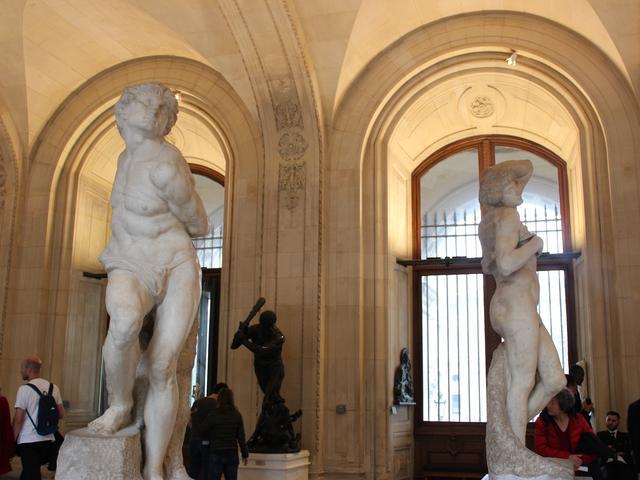Louvre
Don't miss anything
Michelangelo's Slaves
by Michelangelo Buonarotti.
Titian, Raphael, Leonardo Da Vinci and Michelangelo were the titans of Italian art in the sixteenth century. Their work reveals a sense of simplicity and harmony that makes them true masters.
The Louvre houses two sculptures by Michelangelo. The artist was commissioned to work on the mausoleum of Pope Julius II, but the project was changed several times and Michelangelo left the work unfinished. 40 statues were originally intended for the tomb.
The finished sections of the figures remind us of Michelangelo's desire to reproduce, if not enhance, the beauty of ancient sculptures. The Rebelious Slave writhes as he struggles to free himself. The flexible and sensual form of the dying slave expresses peace and harmony. We can see the use of Contrapposto, how the change of weight on a foot creates a sensation of serenity and movement. It is said that Michelangelo chose to sculpt an allegory inspired by Plato: the human soul is chained to the body as a slave, its earthly prison. Each slave expresses a different emotion to the problem: one slave suffers while the other abandons himself to sensuality. Michelangelo manages to unite the physical and spiritual world in these works.
Another interpretation due to its incomplete nature is based on technical methods. Was there a problem with the marble? If you look at the head of the rebellious slave, there is a fine grain that goes through his face. However, it is also important to note that Michelangelo enjoyed leaving features on his work, such as his tool brands. It is a reminder of the investment and effort of the artist, who always considered sculpture as the noblest of the arts. Michelangelo went on to paint the Sistine Chapel of Pope Julius II.
Michelangelo donated the slaves to Roberto Strozzi who later gave them to the King of France, François I. They have only been exhibited in the Louvre since the Revolution.




